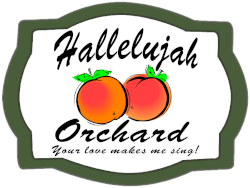October Orchard Care
First let me get you the 2024 Southeastern Peach, Nectarine and Pulm Pest Management and Culture Guide. There is a wealth of information in that guide which is primarily aimed at commercial growers but the pests outlined here, and basic orchard management issues are relevant to residential growers too.
Here is another document that was really a presentation put on by UT Southern Ag. in Marshall County earlier this year (2025). While a lot of this is slides without the commentary, it does contain some lists of resources and photos of pathogens and pests.
I think it will be worth your while to review both of those documents if you are serious about having healthy trees and a healthy production and good fruit quality.
Now that is out of the way, my schedule for October is minimal as I am still waiting for the leaves to drop and the trees to go dormant. Apart from that, I am mowing to keep the grass short and limit the insect habitat. This year we had a lot of “grass hoppers” / locusts, or whatever you want to call them, that did some serious damage to some of the very young trees we planted in February, and also some damage to the smaller, lower limbs on the more mature trees. I did not treat for them so I suppose it’s not terribly surprising. We did have a lot more this year, and a small number of Cicadas that didn’t really do any damage.
Once the leaves are all fallen and the trees are dormant I will be spraying, primarily, for brown rot.The 2024 guide suggests Scholar and Chairman, both Syngenta products that contain fludioxonil as the active ingredient. Last year I used Bravo Weatherstik as that was recommended by my two retired advisors. This year, if I can find Chairman, Scholar or some other fungicide containing fludioxonil I will use that. If not, then I will just use Bravo Weatherstik again. I will spray all of the trees, peaches, nectarines, apricots and apple. This may wait until November, or even December, but I think I will probably get it done late October if I can.
The other spray will be the orchard floor. I will likely spray between the rows of trees with a mixture of Amine 2-4D and Alion (or Centrus WG). The Alion is a pre-emergent broadleaf killer that will suppress broadleaf weed into the late spring / early summer, and the Amine 2-4D will kill any post emergent broadleaf. I have a hood over my boom sprayer to prevent drift. If you are using a hand sprayer / backpack sprayer with a wand you can put a funnel upside down over the nozzle to act as a hood.
I will also be spraying under the trees, in rows, with glyphosate and Alion (or Centrus WG). It is stressed in the 2024 guide that glyphosate should NOT be sprayed on the tree trunks, even mature trees, because it will cause serious damage to the bark. Before I read this, I did get glyphosate on the trunk of some of the trees and it did some damage.
Glyphosate (Round Up) is a post-emergent everything (almost) herbicide but is really only effective on actively growing plants. That said, if your trees have suckers (root shoots), then you should either prune them off 10 days before spraying with glyphosate or prune them off immediately after spraying (it takes about an hour for the suckers to absorb the herbicide and spread it into the plant). If you are going to do as I do, spray, then cut the suckers off, then make sure your pruner is clean of glyphosate between each cut or you will be adding glyphosate to the cut.
Assuming I get all of the above done, the orchard will remain largely untouched until January when I will use a copper spray on all the trees. Kocide 3000, Champ 2F are good copper based fungicides. This is particularly important for the apples, pome fruit, to keep the fire blight at bay, but is also necessary for the stone fruit.
If your trees are not dormant in October, then do your spraying sometime before December.
It is not recommended to do any pruning before February 1st as it makes the trees vulnerable to early fruit tree death.
